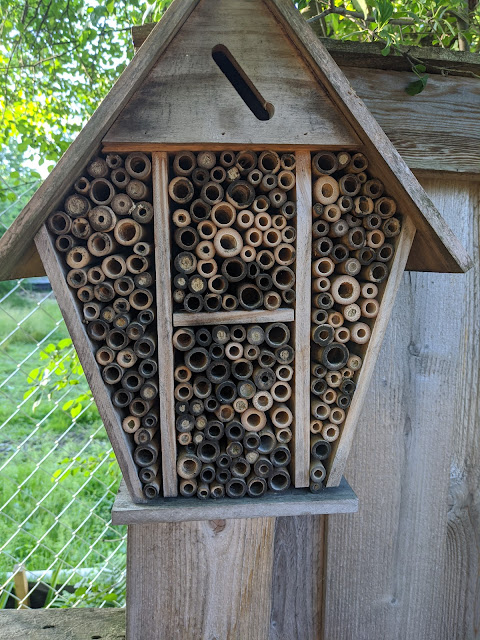2024 Project: Bee Hotel Renovation - February 2024

We've had a bee hotel (or Mason Bee House, if you will) for a number of years, but the past two it has been sort-of 'out of service'. It fell from the its perch and has been laying on the ground. For 2024, I'm going to push myself to renovate this thing. It needs a new bottom and some replacement bamboo pieces. Why did I suddenly think of my Bee Hotel? Because the University of Illinois is (right now...) conducting a " Bee Hotel Project " where they're calling for people to donate their Bee Hotels to science. Check out the details here and sign-up to donate your Bee Hotel here . U of I researcher Timo Wayman (an Entomology graduate student at University of Illinois ) is looking to help better understand native bees. I'm not sure our Bee Hotel will be of any value as it has been sitting on the ground for two seasons, but I'm going to fill out the form and see if they'd like to take a look.





